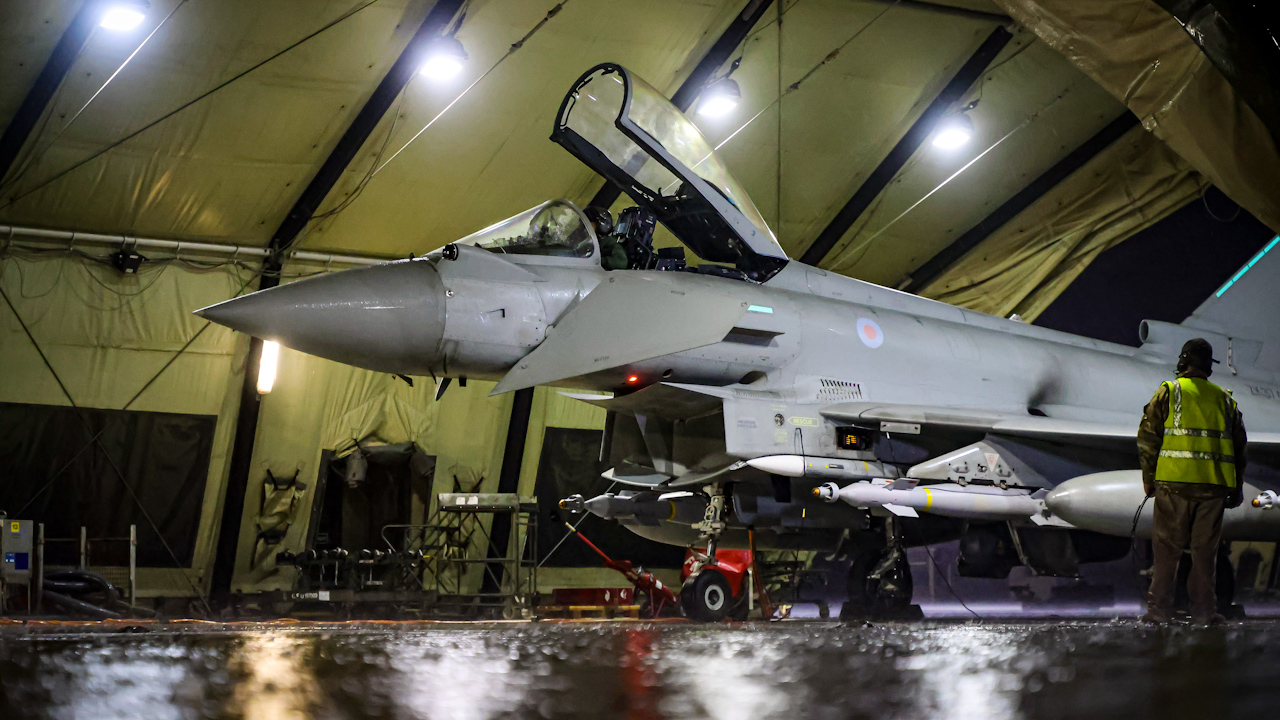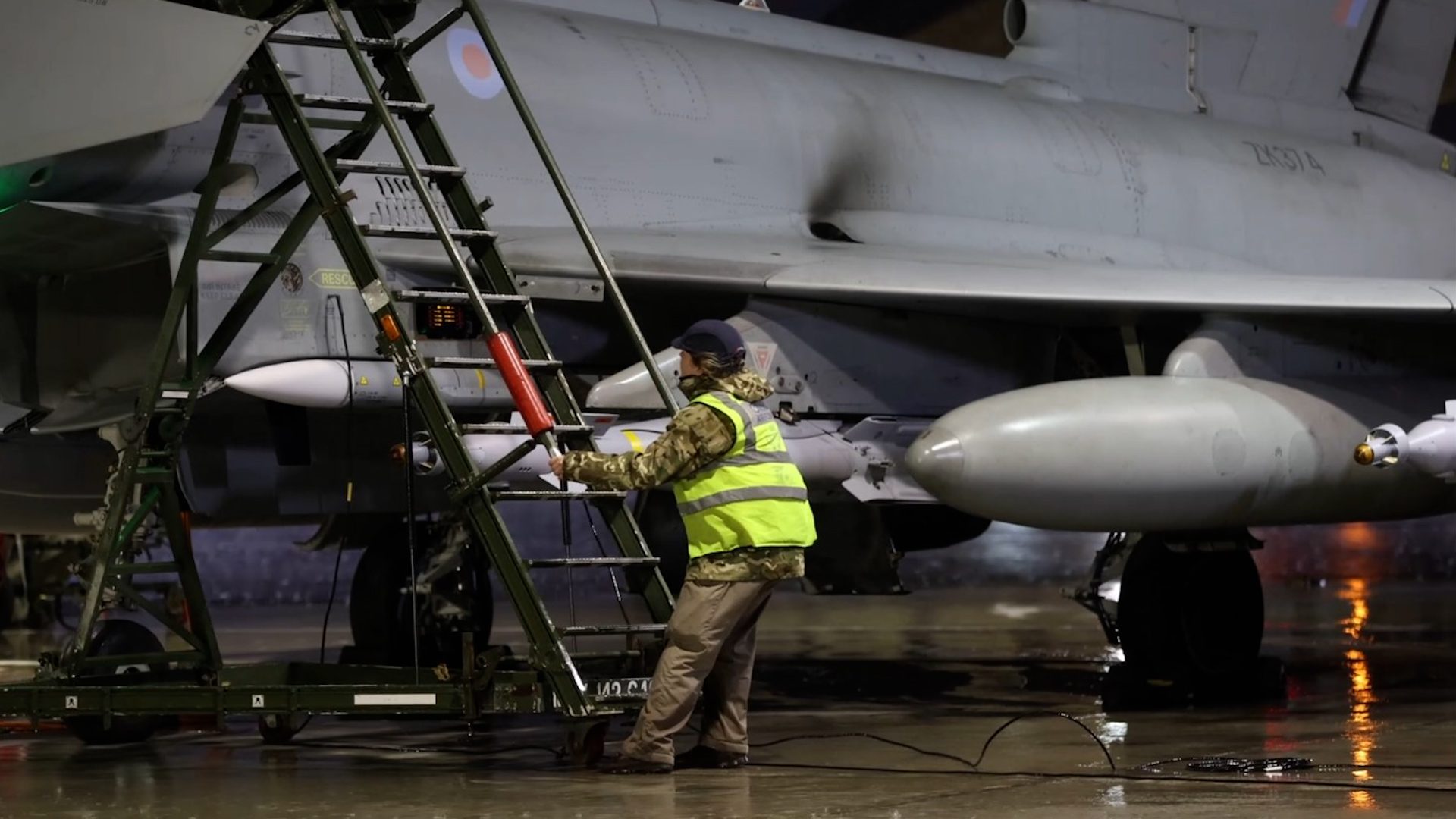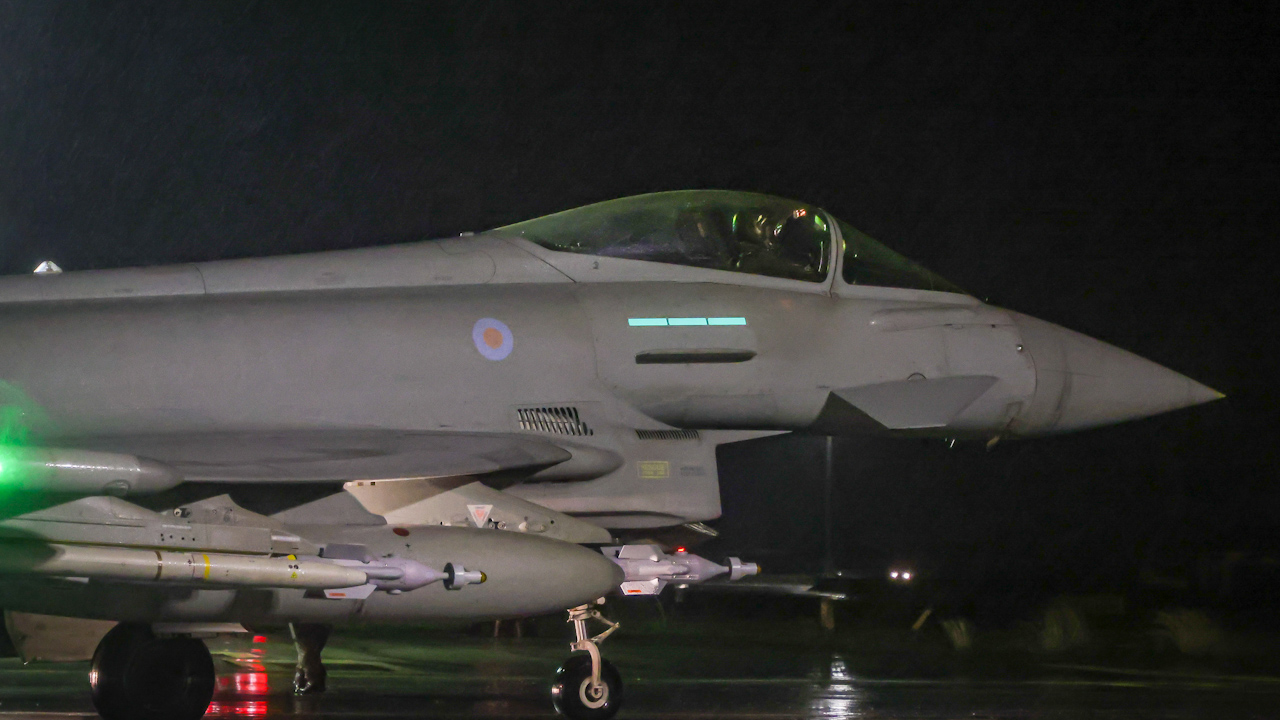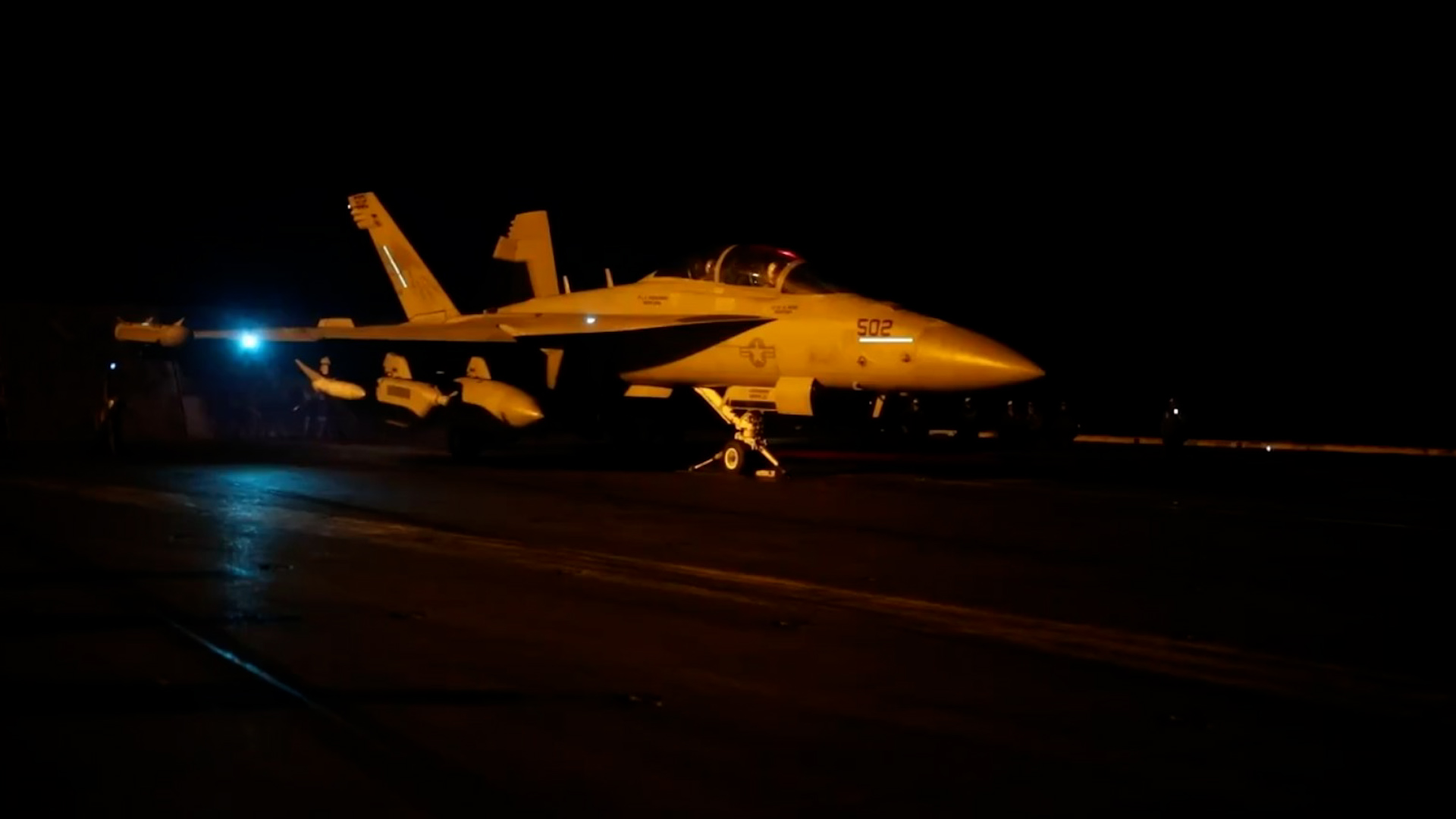
A detailed analysis of the weapons used by RAF and US on strikes against Houthis

Royal Air Force Typhoons dropped 226kg Paveway IV precision-guided bombs on two Houthi sites in Yemen in response to the rebel group's continued attacks on shipping in the Red Sea.
As part of joint strikes with the US, the Typhoon FGR4s struck multiple targets at two Houthi military sites near Sanaa airfield that the UK says were being used to enable the group's continued attacks on vessels in the region.
Monday night's raids were the second joint UK-US strikes against the Iranian-backed rebel group, coming 10 days after the first operation when four Typhoons were also deployed.
- In pictures: RAF Typhoons carry out further strikes against Houthi targets in Yemen
- Defence Secretary writes letter praising military after strikes against Houthis
- UK-US strikes deliver message Houthis need to understand, Strategic Command chief says
Forces News has expertly analysed the imagery released to determine the type of munitions that the British and American aircraft were carrying.
RAF
The Typhoons, which were supported by a pair of Voyager tankers, are seen carrying a number of weapons.
In the image below, Paveway IV laser-guided bombs, which were the weapons used in the strikes, can be seen on either side of a Typhoon's external fuel tank, while a Meteor air-to-air missile is also visible.
Another image shows a Typhoon armed with ASRAAM (Advanced Short Range Air-to-Air Missiles) missiles.

Here's a closer look at the weapons and support aircraft:
Paveway IV
Weighing 226kg, the Paveway comes with a guidance system in the front, a warhead in the middle, which can penetrate concrete, and a tail section which guides the bomb.
When the weapon is released, the aircraft gives it targeting co-ordinates and it's then able to interface with a signal from GPS satellites and fly itself to a very accurate grid reference.
As a dual-mode weapon, it can also be guided onto its targets using a laser.
Meteor air-to-air missile
Typhoons have been fitted with Meteors since late 2018.
Billed as the most advanced air-to-air missile in the world, the Meteor is capable of hitting targets at ranges of over 200 kilometres and travelling at a speed of over Mach 4.
The missile is also capable of hitting targets at well beyond the visual range of the pilots that fire it.
ASRAAM
Advanced Short Range Air-to-Air Missiles (ASRAAMs) are short-range missiles that can hit targets from just over 25km away at a speed of Mach 3 (three times the speed of sound).
The ASRAAM weighs 88kg and is 2.9m long with outstanding resistance to countermeasures, according to its manufacturer.
Voyager KC Mk2
The Voyager is the RAF's only air-to-air (AAR) tanker and can also be used as strategic air support.
There are two versions currently in service – the Voyager KC.Mk 2, which has two underwing pods for refuelling fast jets, and the Voyager KC.Mk 3, which has an extra centreline hose for bigger aircraft.

US Navy
US Navy fighter jets from the USS Dwight D Eisenhower took part in the strikes.
Footage released from US Central Command shows F/A-18s and EA-18G Growlers being launched from the aircraft carrier's flight deck.
The Growler is a variant of the F/A-18 Super Hornet, specialising in electronic warfare and being capable of disrupting, deceiving or denying a range of enemy electronic systems, including radars and communications.
The Growler seen in the footage is armed with:
ALQ-99 tactical jamming system
The ALQ-99 is an electronic attack capability that is used against radar and communications targets to suppress enemy air defences.
The Growler can carry up to five of the system's tactical jamming pods - two under each wing and one under the fuselage.
AGM-88 HARM anti-radiation missile
The AGM-88 HARM, or high-speed anti-radiation missile, is an air-to-surface tactical missile designed to seek and destroy enemy radar-equipped air defence systems.
It can detect, attack and destroy a target with a minimum crew input. The supersonic weapon is around four metres long and weighs 360kg.
ALQ-218 wideband receiver pod
The ALQ-218 is mounted on the wingtip of the EA-18G.

F/A-18F Super Hornets, which like the Growler have a two-seat cockpit, took part in the strikes and can be seen carrying 2,000Ib JDAMs (Joint Direct Attack Munitions).
The GPS-guided bombs have long vanes designed for precise manoeuvring. The bombs can be dropped off from a distance and glide to their target.
According to the US Air Force, a JDAM can be launched from very low to very high altitudes in a dive, toss or loft as well as in straight and level flight with an on-axis or off-axis delivery.
Images posted by US Central Command also show an E-2 Hawkeye command and control aircraft preparing to launch from the flight deck.
The high-wing turboprop aircraft has five crew members and has a distinctive 7.3 metre diameter radar rotodome attached to the upper fuselage.
It provides airborne early warning, airborne battle management and command and control capabilities, while also being capable of carrying out other missions like surface surveillance coordination.
As the US Navy's eyes in the skies since the 1960s, it can direct fighter jets to carry out strikes.
According to reports, US officials said warship- and submarine-launched Tomahawk land attack missiles were also used in the latest strikes in Yemen.









